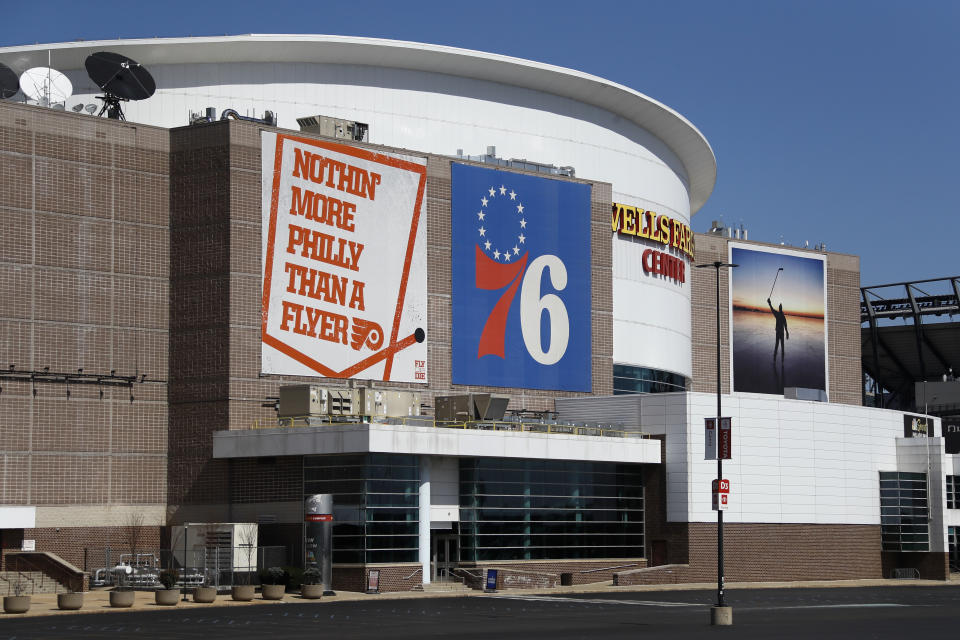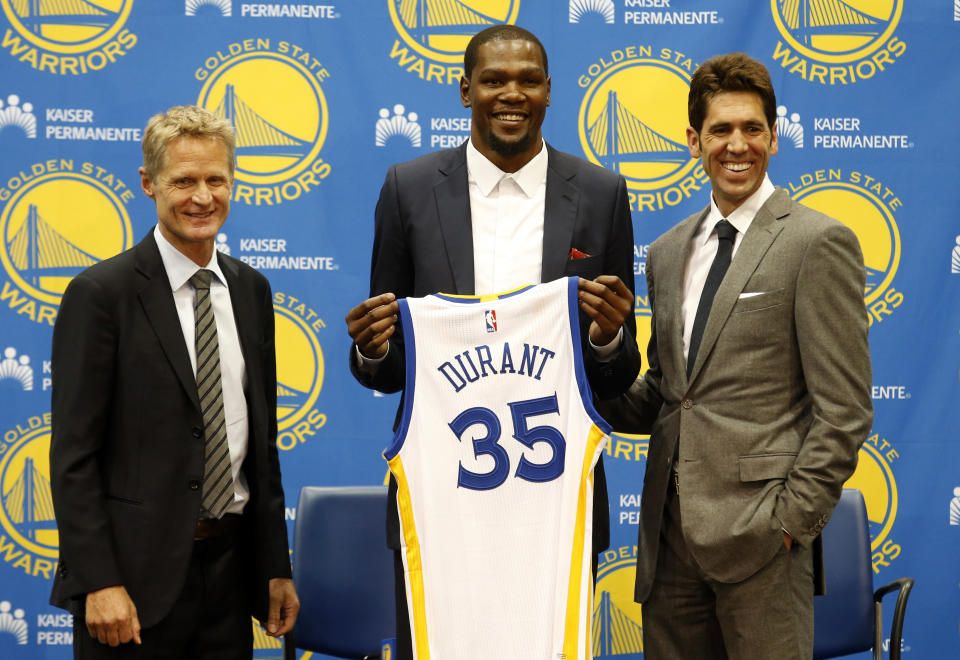How the coronavirus could affect the NBA, CBA and the league’s future
Because of the coronavirus pandemic, the NBA is on hiatus, and the league has no idea when it will resume — or if it will even be able to. The NBA calendar won’t look anything like what we’ve seen in the past if it does resume. The league is still researching alternatives that could allow for a resumption of the season, or at least a shortened version of it. Various reports say that the NBA has teams looking at arena dates that stretch into August. The NBA clearly isn’t going to let go of the remainder of the 2019-20 season unless it has no choice.
But what happens if the season is ultimately canceled? Or what if games were played without fans present? Do players still get paid? Will the salary cap for next season be impacted? Those are the common questions being posed across all forums. With an understanding that everything is negotiable, here is where the NBA stands, CBA-wise.
Will players still be paid?
Short answer: Probably. Longer answer: It really depends.
All NBA contracts became fully guaranteed on Jan. 10, as they do every season. That means that every player is now guaranteed their full salary for the remainder of the 2019-20 season. That part is pretty simple.
What’s not simple is the answer to the question of a longer than anticipated shutdown, or a full cancellation. In that case, the NBA has the right to enact “force majeure”, which could involve anything from lower payments to changed pay schedules to a full opt -out of the CBA.

What exactly is “force majeure”?
Force majeure translates roughly to “superior force.” In effect, it’s the clause that covers widespread events that impact the ability to perform work and/or pay for that work. Many refer to this as the “act of God” clause that appears in almost any contract that is signed.
In terms of the NBA, the league can enact force majeure if they feel the season is lost due to the COVID-19 pandemic. If the league enacts force majeure, the players would lose 1/96.2 of their individual salary for each regular season and playoff game missed. That’s across the board for every player, whether they are on a minimum contract or maximum contract.
In addition, the force majeure clause also allows the NBA to terminate the CBA. That’s the last and least likely option for the league. That action could tie things up legally for a time period stretching long past the current coronavirus outbreak. That’s more of a revenue impact than canceling games would ever be.
Just how much revenue is lost per game?
That’s a hard number to peg, and it’s highly variable. Let’s say you’re a small-market team in the midst of a rebuilding season and you’re hosting another small-market team on a Tuesday night? That gate (the amount of revenue brought in for that game) might be around $1 million. But if you’re the Celtics playing the Lakers on a Saturday night, you’re probably bringing in north of $3 million.
League sources have tabbed a rough estimate of $2 million per game as an average. The NBA currently has their accountants working through calculations now to prepare an estimate of revenue lost with various scenarios.
Conservative estimates are that the NBA will lose $500 million if games are canceled or played without fans present.
Why not just play games without fans? Surely it can’t take more than 50 people to play a game?
This one isn’t really CBA-related, but it’s coming up a lot. Let’s break it down:
13 active players per team = 26 players
Minimum of 5 coaches per team = 10 coaches
Minimum of 3 training staff personnel per team = 6
Officials = 3
Game staff (scorekeepers, clock operators, etc.) = 5
That’s already 50. And that’s before any broadcasters, camera operators, or other staff. After that you have to add any arena staff that would need to present, such as security.
The Utah Jazz had a traveling party of 58 tested in Oklahoma City after Rudy Gobert tested positive for the coronavirus.
Could you cut back on some of that? Sure. But not by a meaningful enough amount to get under 50.
Let’s say the NBA can play without fans and loses $500 million. What happens then?
That $500 million is part of the basketball related income (BRI). BRI is in many ways the key figure in the CBA. That’s the amount that really matters, as BRI is what gets split between the teams and players. The players get 51 percent of that total and the teams get 49 percent. That works out to $255 million for the players and $245 million for the teams.
Here’s where it gets a little complicated. The easy assumption is to take that $245 million loss and split it by the 30 teams. That works out to $8.5 million lost per team.
The salary cap for the 2020-21 season is currently projected at $115 million. That projection has already come down by $1 million due to the NBA’s loss of revenue in China. Another $8.2 million off that would put the cap at $106.8 million. That figure would actually be less than the current cap of $109 million for the 2019-20 season.
Why is that complicated? The CBA has an escrow process in which 10 percent of the players’ salaries are held. This is done to protect the players from a major revenue loss. That means that the amount lost on the players’ side could go down. It also means that if the amount lost is great enough, the players could end up with more than 51 percent. At that point, things will get really complicated.
Would a cap of $106.8 million mean no player movement this summer?
Not necessarily. There are still mechanisms for movement (trades, sign-and-trades, etc.) that could result in transactions. In addition, several teams would have less cap space than anticipated, but would still have enough cap space to make free-agent signings.
What would happen is some teams would end up in the luxury tax that weren’t planning for that. That could make for some interesting decisions, as every team’s front office has their own feelings about paying the tax.
There also exists that possibility that the cap would not lower by that much, or at all.

How would the league not lower the cap if that much money is lost?
Remember when we said that everything is negotiable? The cap is no different. The CBA includes language in which the NBA and the players association can agree on an amount for the cap to be set at. They can disregard the BRI calculation entirely and simply agree on a figure that works for both sides.
Why would they do this? There are a couple of reasons. First, a drop that pushes $10 million from the initial projections is pretty steep. That would have major impacts on players who are free agents this summer, and those players who have already agreed to max contract extensions coming off their rookie-scale deals.
Reducing the cap for 2020-21 could also have consequences for 2021-22. Let’s say things are back to normal (or some semblance of normal) for the 2020-21 season, but that season is played under a reduced cap from this year’s impacts. In that case, the revenue would be back to a normal amount. That would cause the cap, with previously adjustments priced in, to jump in 2021-22.
Remember the cap spike in 2016 that allowed the Warriors to get Kevin Durant? It’d be just like that all over again.
This is a weak free-agent class and not a lot of teams have cap space. Why not just let a spike happen in 2021 with a great free-agent class?
As fans of the game, that would be amazing. In 2019, we saw a ton of player movement that basically reset the league. It could happen all over again in 2021. A cap spike would only further the chance that takes place.
But the players association wants something that works for all of its players. It wants to make sure everyone is taken care of. While the union has rejected cap smoothing plans in the past, those plans have always called for a gradual step up in the cap instead of a spike. In this case, the smoothing would protect a drastic drop, followed by a spike, which would in theory protect more tiers of players. That’s a more negotiable thing than artificially keeping salaries down over a period of years.
So, what happens next?
That’s the big question out there and no one can answer that. To this point, the NBA is on hiatus through at least mid-April. That will likely be extended, but the league has had no comment on that as of yet. We have no idea what the schedule will be when the NBA does return. When those plans are firmed up, we’ll have an idea of what the long-term impact will be.
More from Yahoo Sports:

 Yahoo Finance
Yahoo Finance